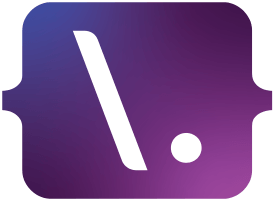
Issue 673
9th August 2024
Written by Dave Verwer
Comment
I’m sure you already read this week’s news that Apple’s profit from services is creeping up on its hardware profit. That’s mind-boggling, but it shouldn’t come as a huge surprise. They’ve been working on this plan for years.
What does “services revenue” mean in practice? It means subscriptions and part of that revenue comes from subscriptions attached to apps in the App Store. That set me thinking about pricing again. 🙄
When the App Store launched, the only option was a one-time purchase or free. Prices started “high” and raced to the bottom. Then came in-app purchases in 2009, and subscriptions a couple of years later.
Why am I giving you a history lesson on a topic you already know? Because for some, the perception of pricing in the App Store is that the story ended with the race to the bottom. That’s no longer accurate and apps are now more expensive than ever by orders of magnitude.
App Store pricing today has settled with subscriptions being the dominant business model. Most significant apps settled on prices around $3-6/month or $30 to $60 per year. Some apps offer lifetime one-time purchases as options, and from my experience, those tend to start at $100 and go up to about $300. Far, far more than almost any app back in 2008.
So is the App Store back to being an easy way to make money? Are we in another gold rush? Absolutely not, because while individual app prices have increased, the number of apps people use is quite small. I almost certainly use more third-party apps than the average person and from a quick count, I use less than 20 regularly. I’d guess that most people use less than 10.
Subscription fatigue is real, but the model is here to stay, at least for those apps that someone uses regularly. All you need to do is be one of those apps!
– Dave Verwer
Sponsored Link
RevenueCat Ship-a-ton: Ship apps and make moneyRevenueCat is hosting a hackathon all about shipping apps and making money. Get your app featured on over 150 digital billboards throughout San Francisco, or win some of the $25k cash prizes we’re giving out! Join the Ship-a-ton.
Tools
Reminder: Conditional Breakpoints are SlowIs your app running slowly when you debug it? Chris Trott might know why.
Code
The meme that gave me imposter syndromeJacob Bartlett’s latest article had me chuckling as I read the title, right up until I realised that the meme also gave me imposter syndrome. 😬 What follows is full of good humour and good knowledge. I’d thoroughly recommend reading it as long as you can navigate SubStack’s appalling reading experience. How did they already become as bad as Medium? 🙄
Swift Navigation
I like that this new library from Brandon Williams and Stephen Celis builds on top of SwiftUI’s built-in navigation APIs rather than replacing them. It also supports UIKit and doesn’t require you to already be using their swift-composable-architecture library.
Getting started with Embedded Swift
Interested in Embedded Swift? Paul Solt is, too, and he decided to record the first hour of his experiments with it. Why would you use C or C++ for this if you didn’t have to!
How to automatically detect memory leaks on CI/CD using UI tests
I had no idea XCTMemoryMetrics existed, and so this whole article from Pol Piella was an eye-opener for me!
Books
Crafting Consistency and AccessibilityFrank Thamel has two books for the price of … well, one is free and the other is paid. The first, “Crafting Consistency: Building a Complete App Design System with SwiftUI”, is more code-focused than you might think given the name, but covers much of what you’ll need to know to make a SwiftUI app look good. It’s missing a chapter on accessibility, but that’s OK as there’s a whole other book on that subject, and that’s the free one. 👍
For full disclosure, Frank sent me a copy of the books.
Jobs
iOS Engineer @ Pika Earth – We’re a high-growth, Sequoia backed climate tech company. iOS is our main user surface area, so you’ll be responsible for many high-impact features that touch our core users. There are a ton of interesting technical problems, from offline mode to AR/VR modeling, and we have a world-class team. – On-site (United States in CA or NY) with some remote work (within US timezones)
Software Engineer for AI Training Data (Swift) @ G2i, Inc. – We are currently seeking Swift Developers for project-specific roles focused on RLHF. This role will play a key part in our reinforcement learning from human feedback (RLHF) initiatives, contributing to cutting-edge projects. – Remote (within US, European, or Asia-Pacific timezones)
There are more jobs, as always, on the iOS Dev Jobs site. Posting a position is free, too, so let your hiring managers know!
And finally...
Continue to allow screen recording: Cancel or Allow?
